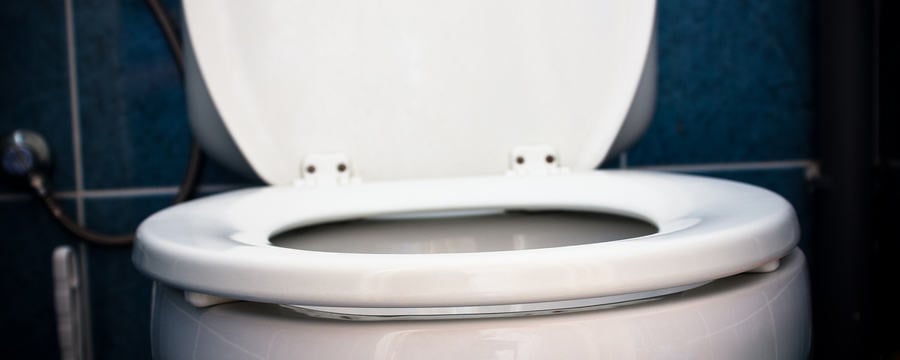Medication
Medication is used to treat bladder and bowel dysfunction.
Common bladder conditions treated with drugs include:
-
Overactive bladder (OAB) and urgency incontinence
-
Benign prostatic hyperplasia (BPH) ‘enlarged prostate’
-
Vaginal atrophy
OAB and urgency incontinence
If lifestyle changes and bladder training are unsuccessful, medication is recommended.
Anti-muscarinic medication
Anti-muscarinic (also known as anti-cholinergic) medication can reduce the sensation of urgency and unwanted reflex bladder contractions.
Anti-muscurinics act by blocking parasympathetic nerves that control detrusor muscle contractions and allow relaxation of the bladder’s smooth muscle.
A bladder scan should be carried out prior to prescribing anti-muscurinic medication, to rule out urinary retention.
NICE recommends immediate-release oxybutinin as the first line treatment if bladder training has been ineffective.
Note: Oxybutinin should NOT be offered to frail older women. However, some of the newer, extended-release anti-muscarinics are reported to have a lower side effect profile and are better tolerated.
- Examples of anti-muscarinic medication are:
- Oxybutinin: should not be offered to frail older women
- Tolterodine
- Darifenacin
- Fesoteridone
- Solifenacin
- Trospium
- Common side-effects include dry mouth, dry eyes, constipation and gastric disturbances
- Caution is necessary in frail older people as cognitive function may be affected
- Regular review is essential to monitor effects. Agree a review date and ask the individual to complete a bladder diary for at least 3 days prior to review
- Doctors are advised to calculate the individual’s overall anti-cholinergic load or burden when considering prescribing an anti-muscurinic, especially in older people who are already on a number of medications. More information can be found about anticholinergics from NHS Scotland Polypharmacy website[1]
Alternative to anti-muscarinic medication
Management of Severe Urge Urinary Incontinence
Onabotulinumtoxin Type A
- It is injected using a cystoscope into various points of the bladder wall and works by partially paralysing the detrusor muscle, thus eliminating excessive detrusor contractions
- The effect is temporary and may need to be repeated
- Individuals should not be offered onabotulinumtoxin Type A unless they are able to self-catheterise. They should be advised that their bladder may not empty following the procedure and that they need to learn to self-catheterise before the procedure can be carried out.
- In severe cases, bladder augmentation or sacral nerve stimulation surgery may be considered
Oestrogen therapy
Medication for prostate enlargement
Clinical practice point. It is essential that a diagnosis of benign prostatic hyperplasia (BPH) is made and prostate cancer is ruled out, before any drug treatment is offered to men with lower urinary tract symptoms or urinary incontinence[3].
Common drug treatments of BPH include[4]:
Alpha-adrenergic antagonists
Alpha-adrenergic antagonists (known as alpha-blockers), reduce the tone in the muscle of the neck of the bladder. They should be offered to men with moderate-to-severe voiding symptoms. Alpha-1 receptors are subdivided into types 1a, 1b and 1c. The alpha-1a is predominant in the prostate, bladder neck and urethra and the most selective drug available is tamsulosin.
Alpha-blockers are a first-line therapeutic option.
Drugs include: Alfuzosin, doxazosin, tamsulosin and terazosin. They do not alter the natural progression of the disease but they relieve symptoms of hesitancy, intermittency and nocturia.
5 alpha-reductase inhibitors
5 alpha-reductase inhibitors (5-ARI) are a first-line therapeutic option for men with bothersome LUTS and a prostate size estimated to be larger than 30 g or a PSA level greater than 1.4 ng/ml, and who are considered to be at high risk of progression (for example, older men).
Drugs include: dutasteride and finasteride. They are effective treatments for men with LUTS associated with demonstrable prostatic enlargement and improve the natural history of BPH by reducing the risk of acute urinary retention (AUR). They may take several months before they have an effect.
Other treatments
- Men who have bothersome moderate-to-severe LUTS, which have not responded to monotherapy are sometimes offered a combined alpha-blocker and 5-ARI. Treatment should be continued for at least one year
- If OAB symptoms are also present an antimuscarinic should be offered to manage the symptoms
- Men with nocturnal polyuria and bothersome nocturia may be given a late afternoon loop diuretic eg furosemide
- Oral desmopressin may be offered to men with nocturnal polyuria if other medical causes have been excluded and they have not benefited from other treatments. However serum sodium should be checked 3 days after the first dose and if reduced to below the normal range, desmopressin treatment should be stopped
- Low dose desmopressin (NOCDURNA [Ferring Pharmaceuticals]) for use by older men and women with nocturnal polyuria has recently been approved for the symptomatic treatment of nocturia due to idiopathic nocturnal polyuria in adults
References
1. Hot topics: anticholinergics. NHS Scotland Polypharmacy website. [Cited October 2018] Available from: http://www.polypharmacy.scot.nhs.uk/polypharmacy-guidance-medicines-review/for-healthcare-professionals/hot-topics/anticholinergics/
2. NICE Technology Appraisal Guidance TA290. [Published 26 June 2013, cited 10 October 2018] Available from: https://www.nice.org.uk/guidance/ta290
3. Knott L. Benign prostatic hyperplasia. Patient.info website. [Last reviewed 12 October 2015, cited 10 October 2018] Available from:https://patient.info/doctor/benign-prostatic-hyperplasia#nav-6
4. NICE Clinical Guideline 97. Lower urinary tract symptoms in men: management. [Last updated June 2015, cited 10 October 2018] Available from: https://www.nice.org.uk/guidance/cg97/chapter/1-Recommendations#drug-treatment
Share this
Understanding Continence Promotion: Effective Management of Bladder and Bowel Dysfunction in Adults

Understanding Continence Promotion: Effective Management of Bladder and Bowel Dysfunction in Adults


Reach your personal and professional goals
Unlock access to hundreds of expert online courses and degrees from top universities and educators to gain accredited qualifications and professional CV-building certificates.
Join over 18 million learners to launch, switch or build upon your career, all at your own pace, across a wide range of topic areas.
Register to receive updates
-
Create an account to receive our newsletter, course recommendations and promotions.
Register for free







